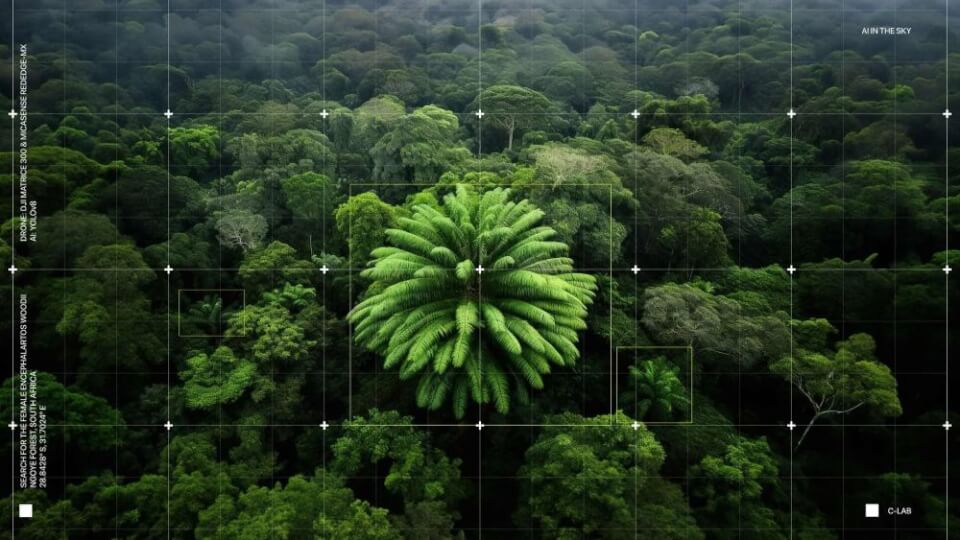
AI in the Sky, Laura Cinti. Photo: C-LAB.
9’ 29’’
A film about the search for the rare E. woodii plant in South Africa’s oNgoye Forest using drones and AI technology. Combining aerial images and data, it shows how the forest is scanned and analysed from above in the quest to rediscover a species thought extinct in the wild.
Link to the artwork website: https://www.c-lab.co.uk/projects/AIintheSky
Laura Cinti is a research-based artist whose practice intersects science, technology and visual storytelling through experimentation and field research. More recently, her focus has shifted to biodiversity loss, using creative and technological approaches to rethink our relationship with endangered species. Her works have been exhibited and presented internationally.
Back








